The Hills of Peace Cemetery (later renamed Verdugo Hills) was dedicated in 1922 to serve the areas of Sunland and Tujunga, California—in the Crescenta Valley region of Los Angeles.
The most recent headstones you see are from, say, 1972. There's one crypt in the mausoleum dating back to 1977.
That was before the torrential rains of February 1978 washed away many of the hillside graves.
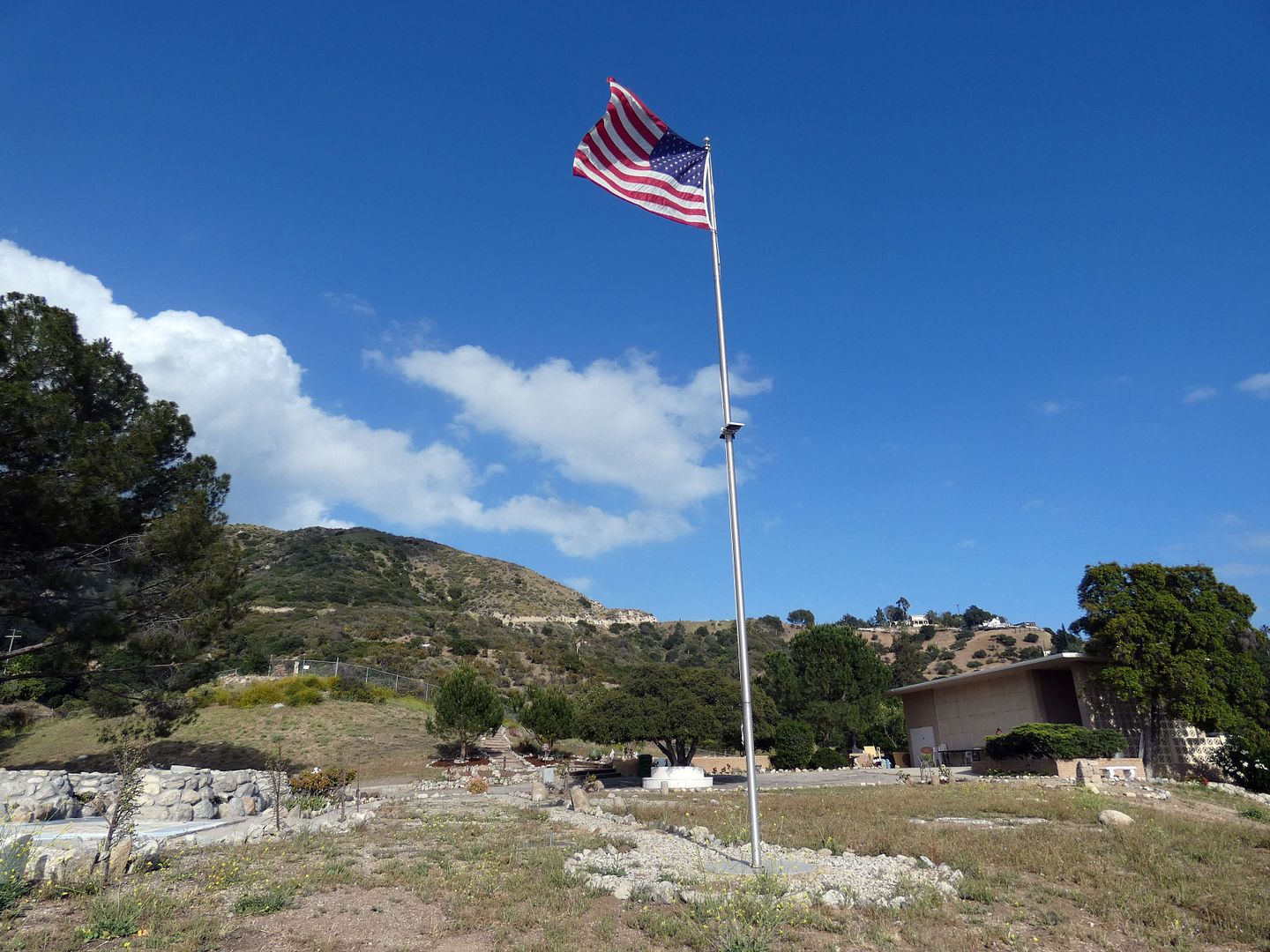
And until recently, the only thing almost anyone ever remembered about it was its grisly history—not only natural disasters, but also vandalism and remains that were improperly disposed. It was so bad, some families actually moved their loved ones from their crypts.
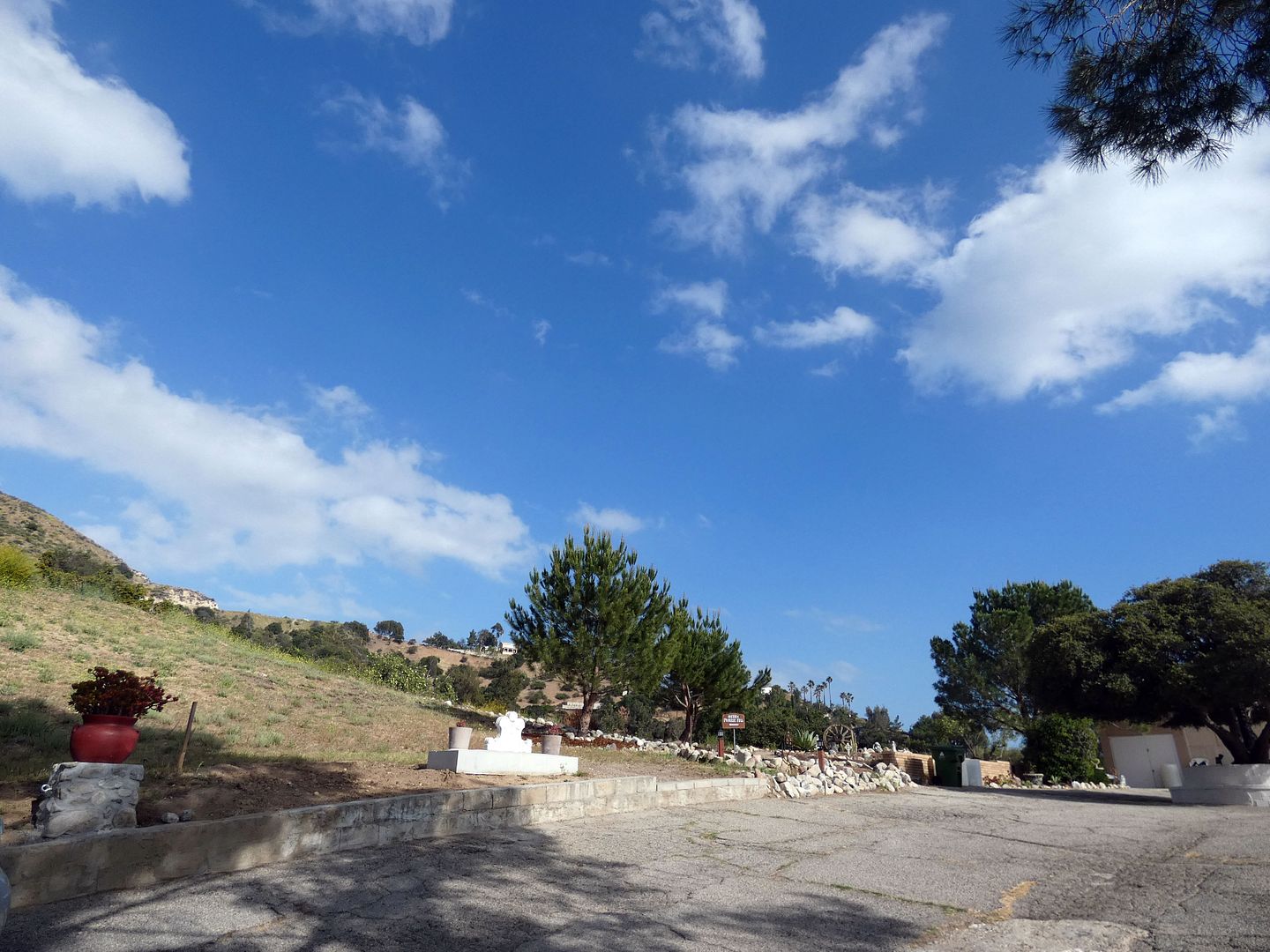
The cemetery finally closed to the public in 2002—after which family members of those interred could visit by appointment only (despite it being declared a Los Angeles Historic-Cultural Monument in 2009). The only other time it was open was for occasional historical tours.
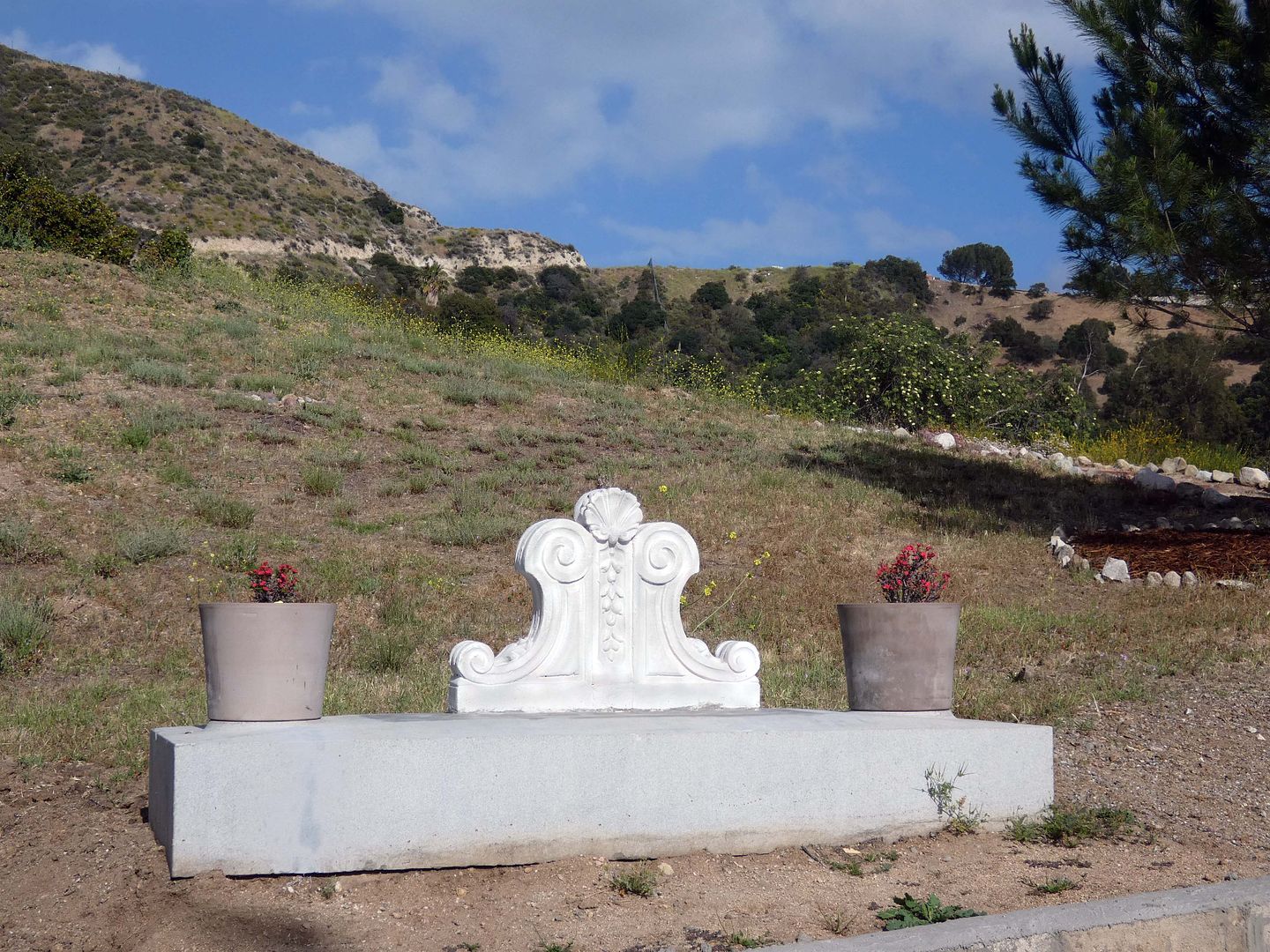
But thanks to the efforts of Friends of Verdugo Hills Cemetery (led by the "undertaker," Craig Durst)—which held monthly and then weekly volunteer cleanup days—the cemetery was prepped and beautified for its centennial celebration on April 23, 2022.
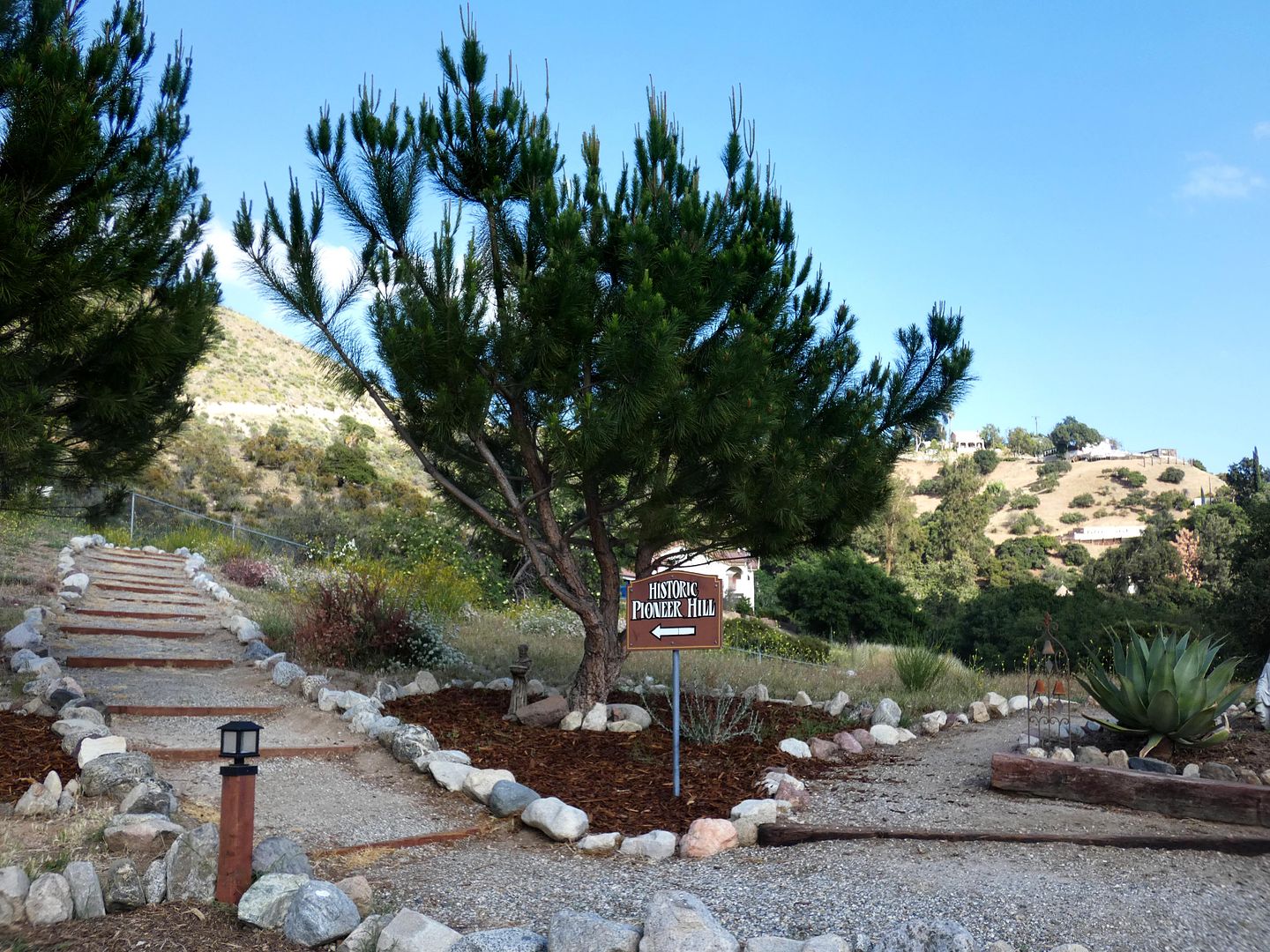
Among the refreshed areas is Historic Pioneer Hill, where one of the original Little Lands colonists, Parson James Wornom (sometimes misspelled "Wornum"), became the first to be buried there on April 22, 1922.

Above: Wornom gravesite
Other pioneers later buried around the top of the knoll—on a portion of the 4 acres of land donated by Marshall Hartranft (known as the "father" of Tujunga)—include the Civil War veteran Hiram F. Hatch.
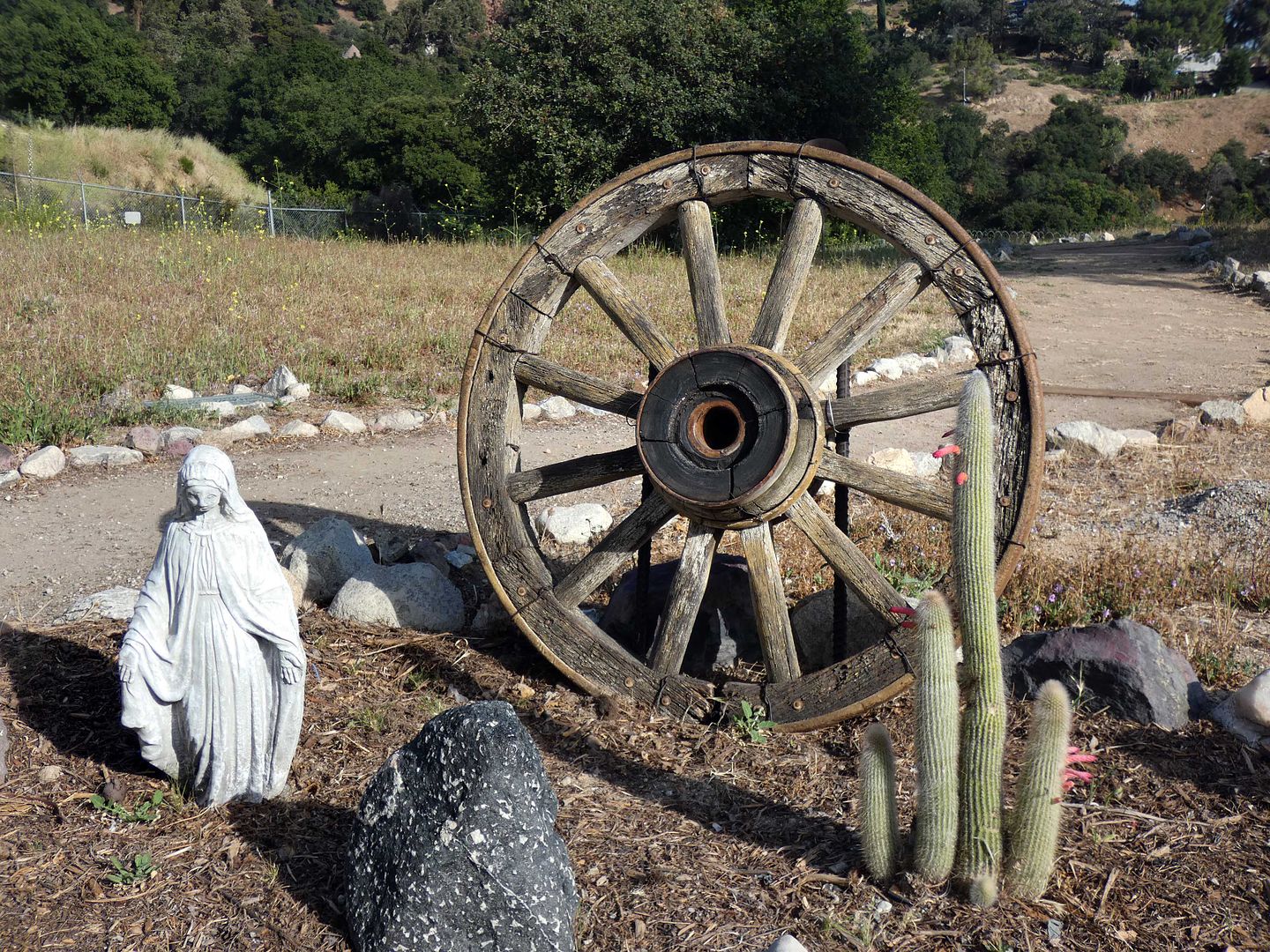
Just beyond the Pioneer Hill pathway is the area known as Sunnyslope...
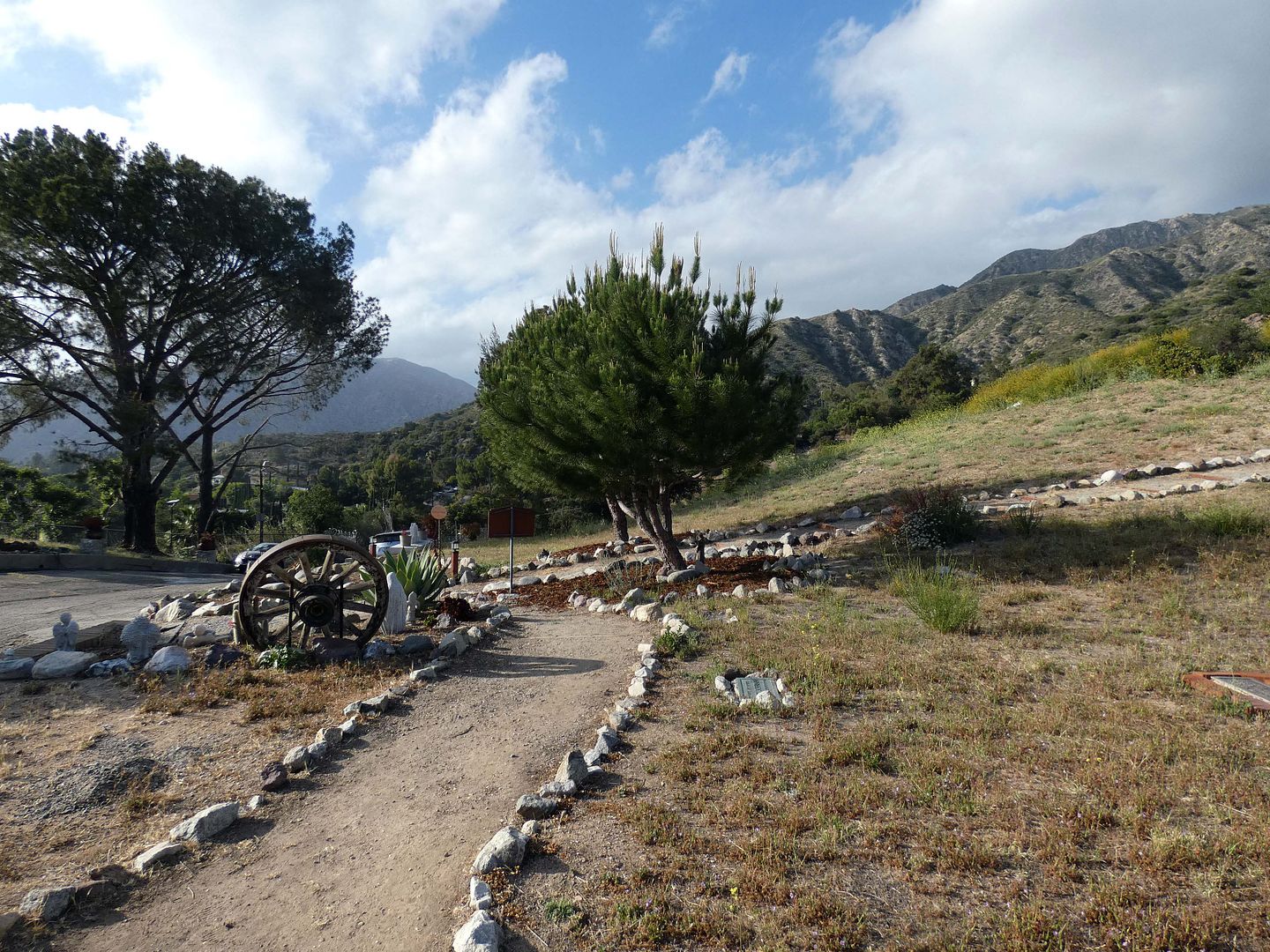
...and the "Good Turns Trail," with brush cleared and new lines of rocks to mark the walkway.

Preserved are the "Sacred Oak" and "Sky Bench," which stand in front of the circa 1957 mausoleum building (reportedly designed by the architectural firm of Armet and Davis, with new replacement travertine facings installed).
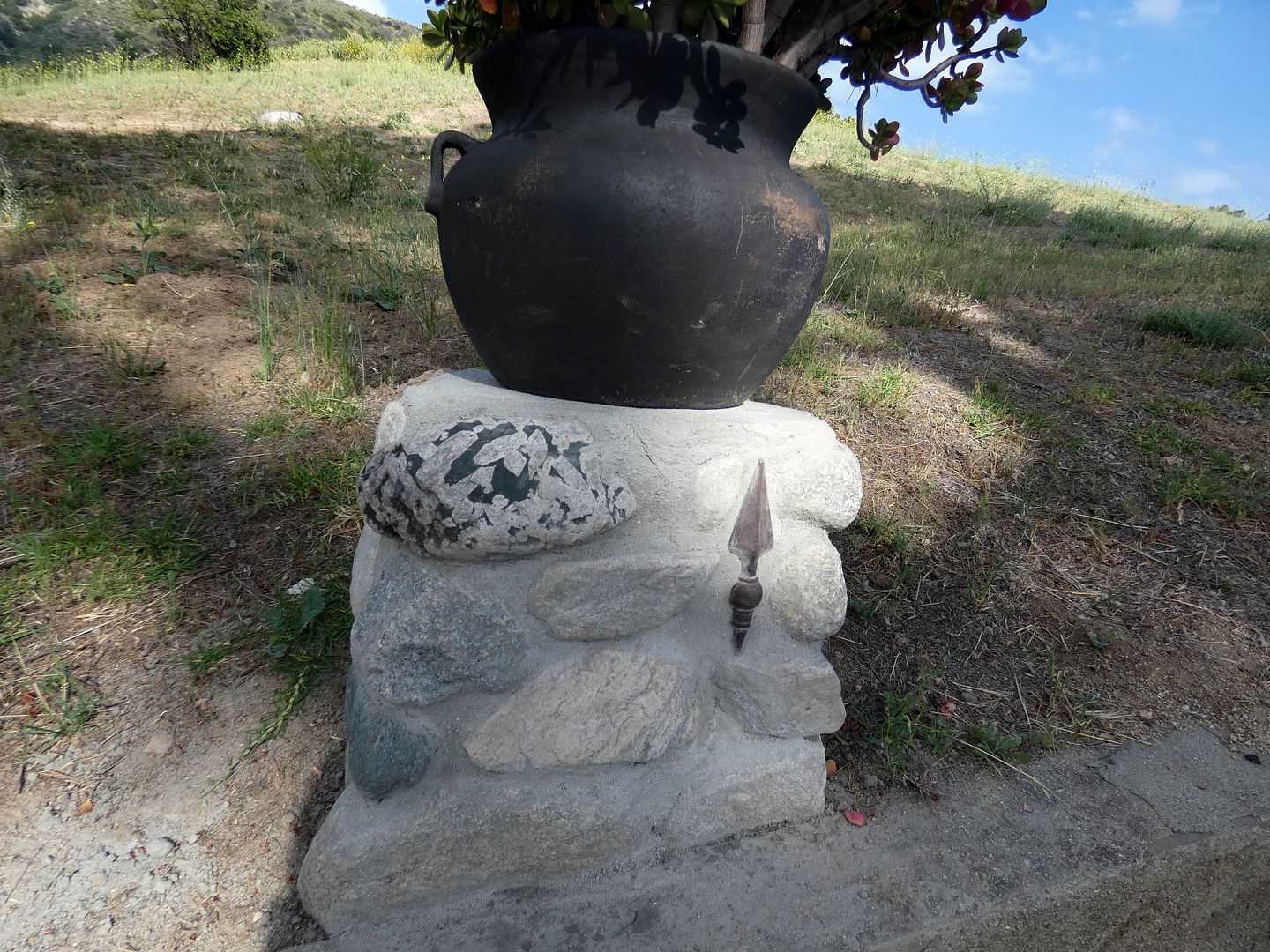
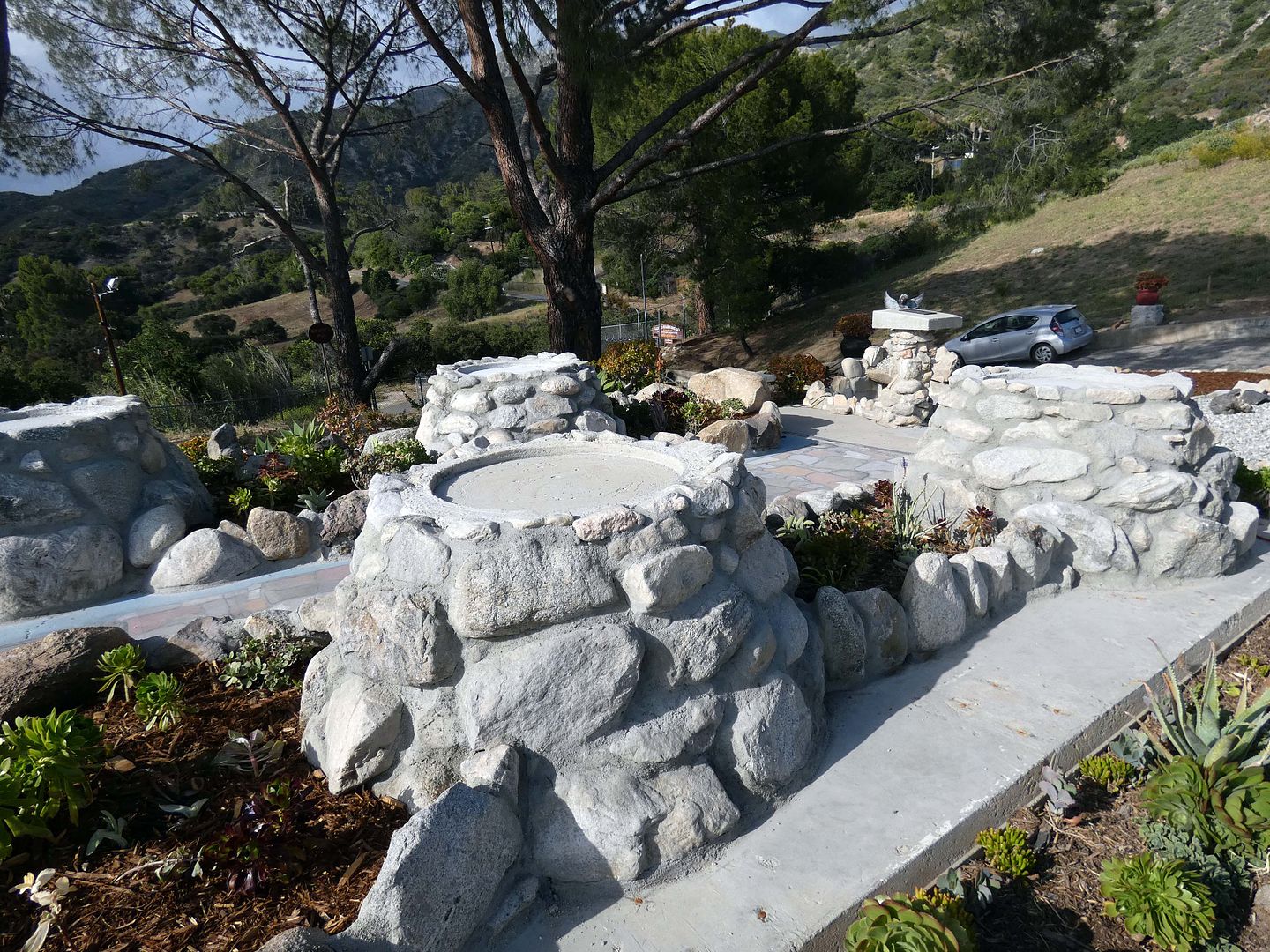
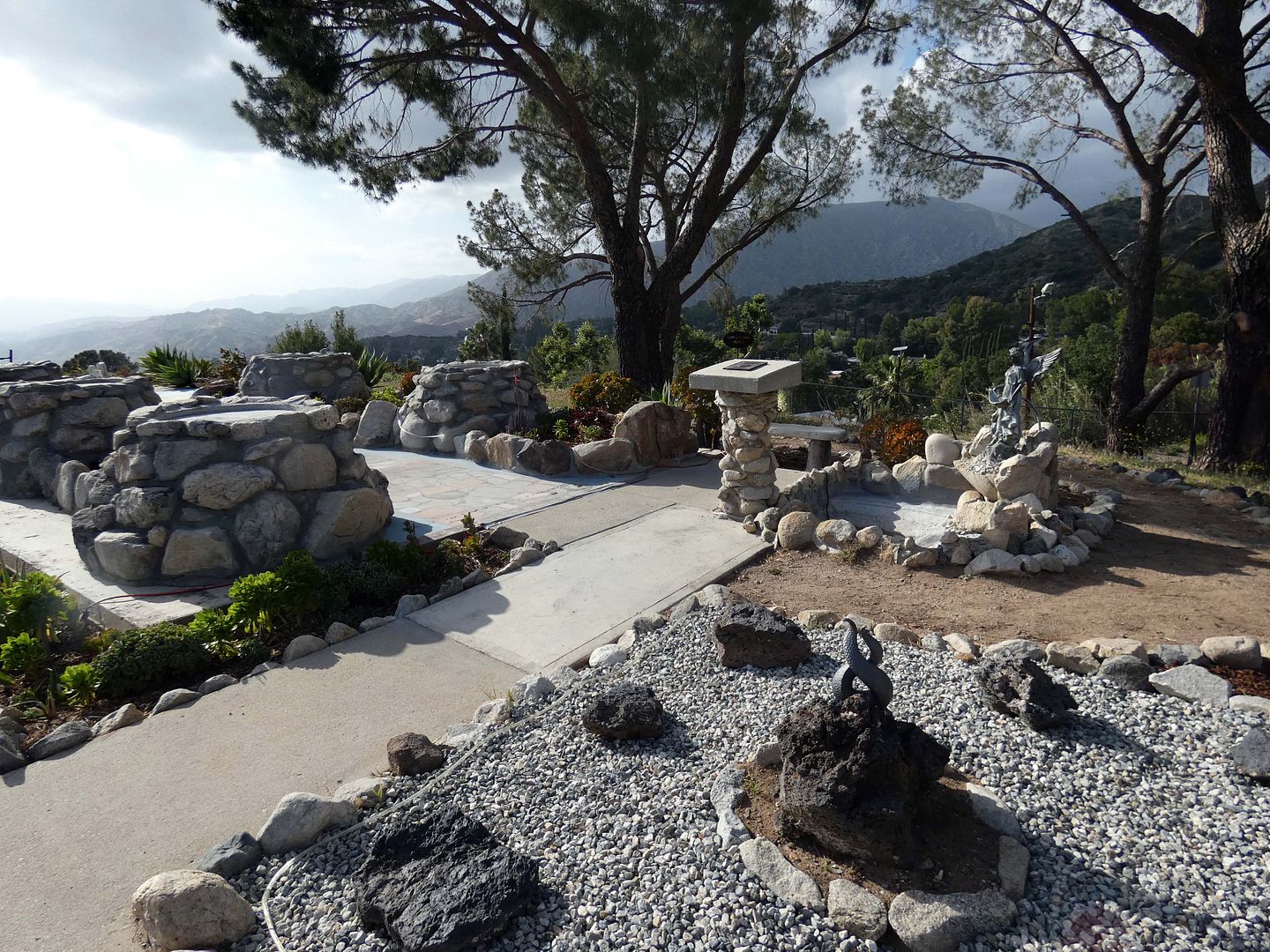
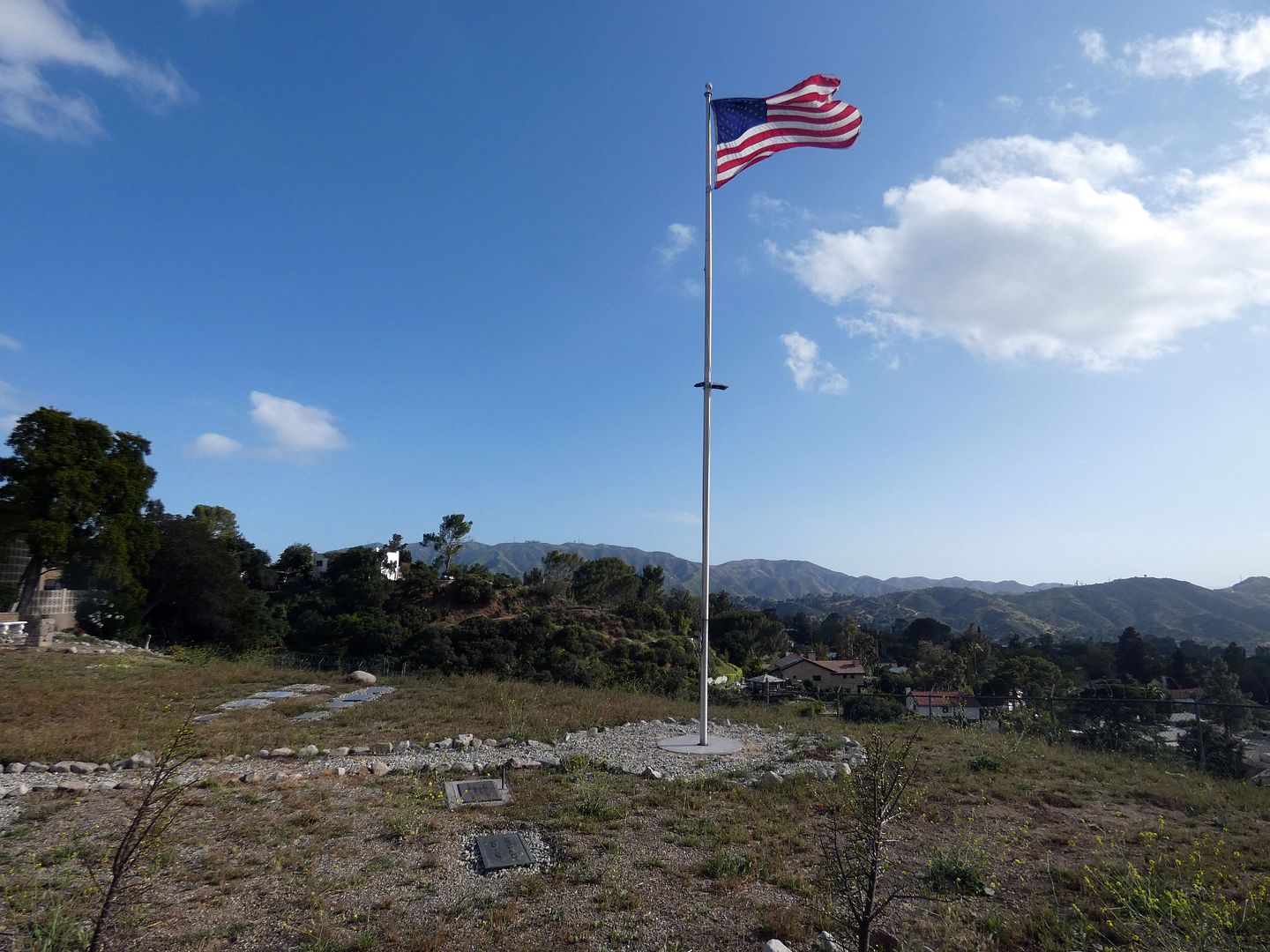
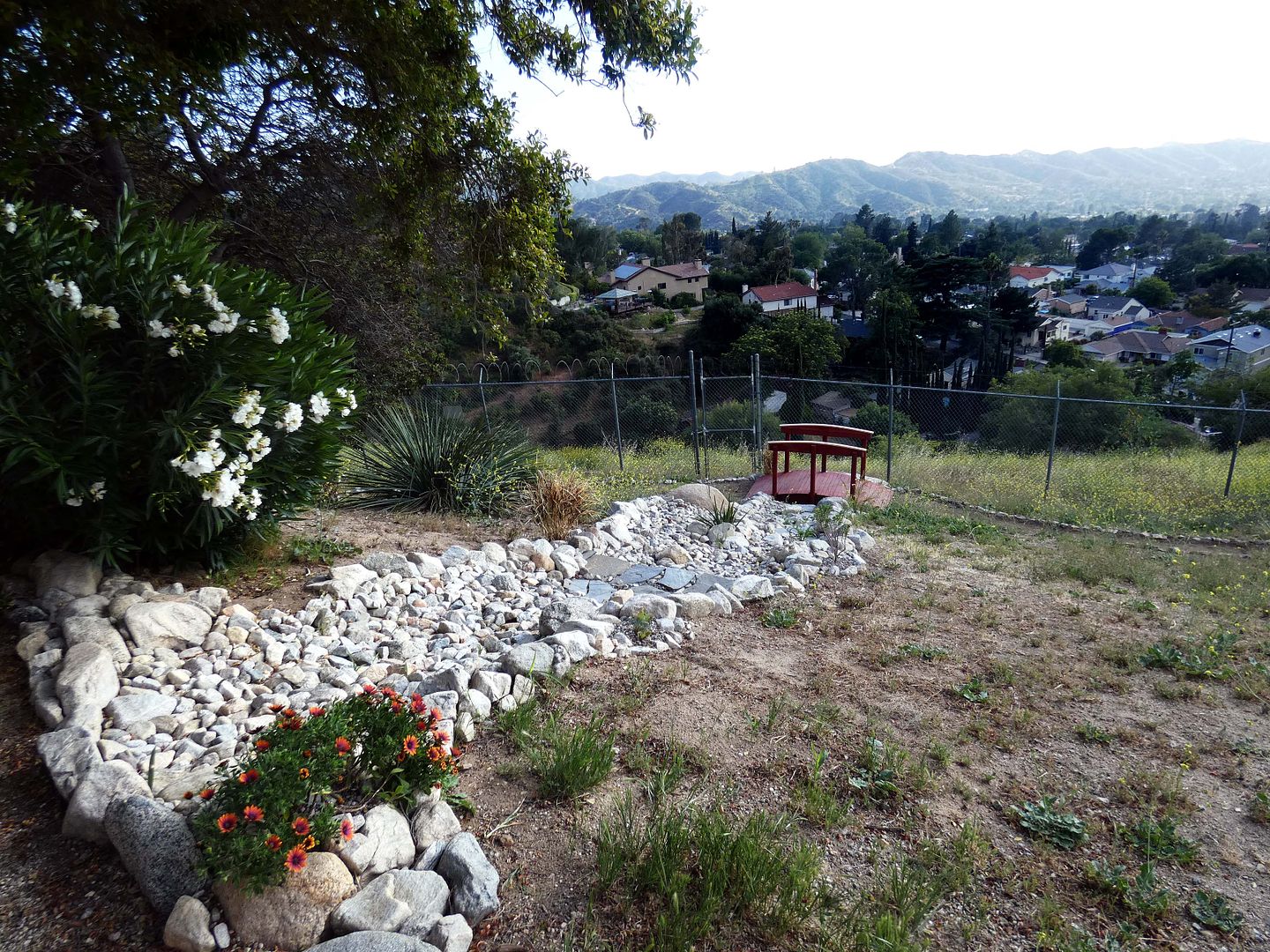

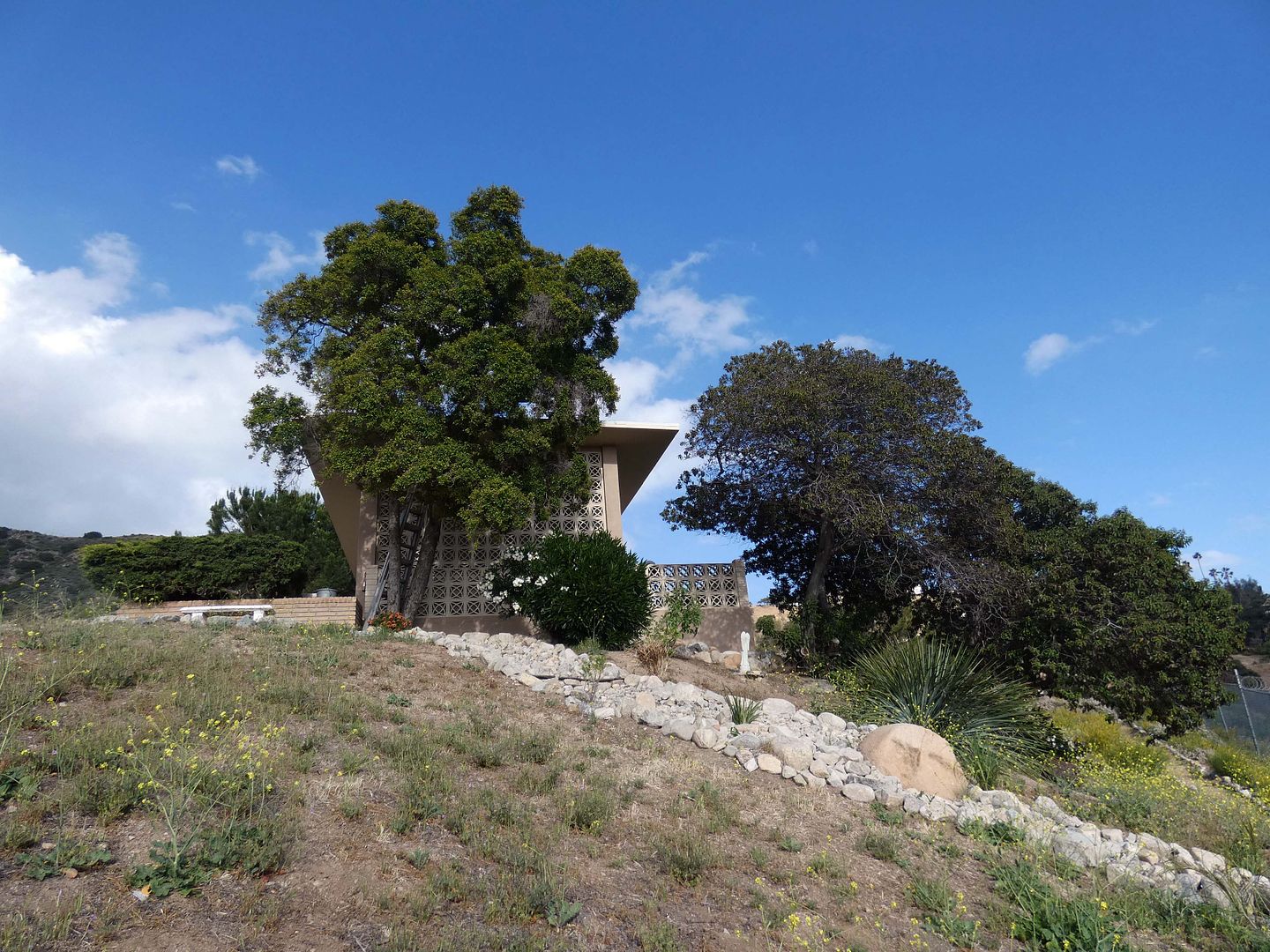

Newly constructed pillars and plant stands incorporate found materials as a hat tip to nearby Dunsmore Park in Glendale.

Still in progress is the "Soldiers Stairway," with medallions representing the various armed forces. The ultimate goal is to depict a stairway to heaven.

The adjacent "Pozzo Wishing Pond" is named after the cemetery's former caretaker, local historian Mary Lou Pozzo. She was also named, as a representative of the Verdugo Hills Preservation Society, on the application for the cemetery's monument status.

One thing that hasn't changed one bit is the quality of the view—which, they say, is "to die for."

In the section known as the Mausoleum Garden, Stoney Creek leads to a newly-installed red bridge—beyond which is the gate that was installed by the City of Los Angeles in 2008. Beyond that are more graves—and the 1978 landslide zone.

But take a walk along the trail known as Overlooked Lane, and look up at the hill, and you can forget everything but the scenery...

...and the serene setting.
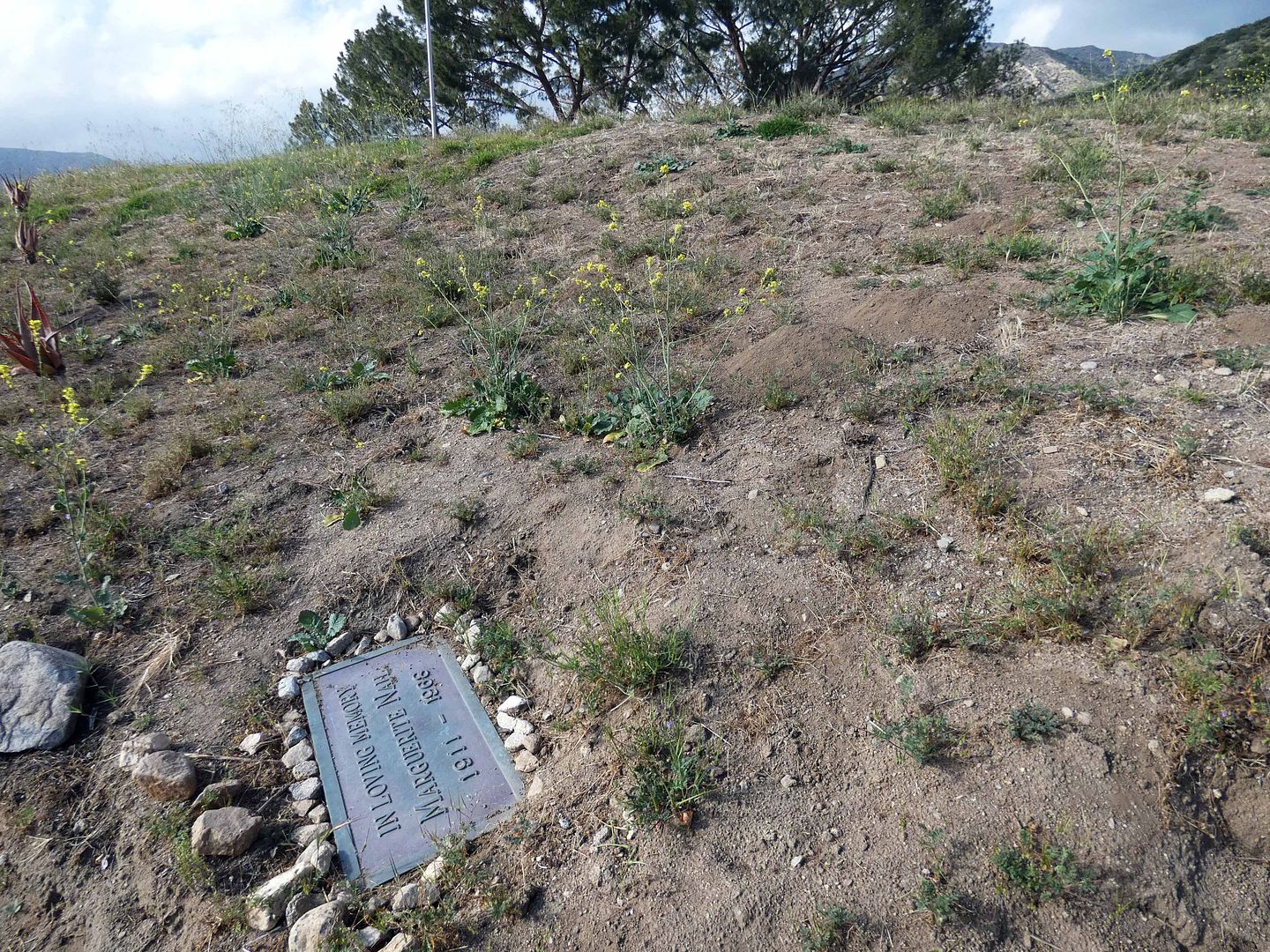
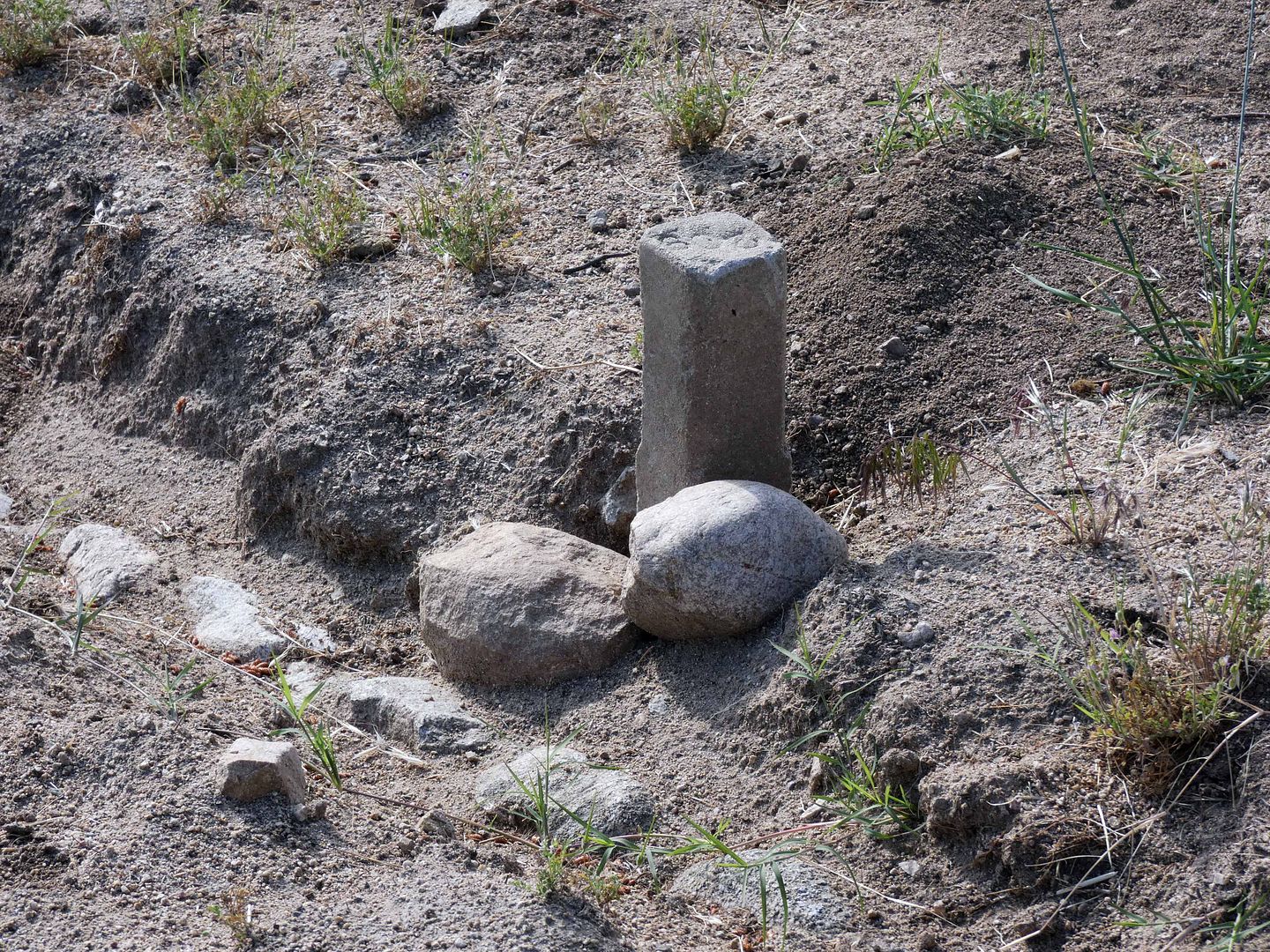
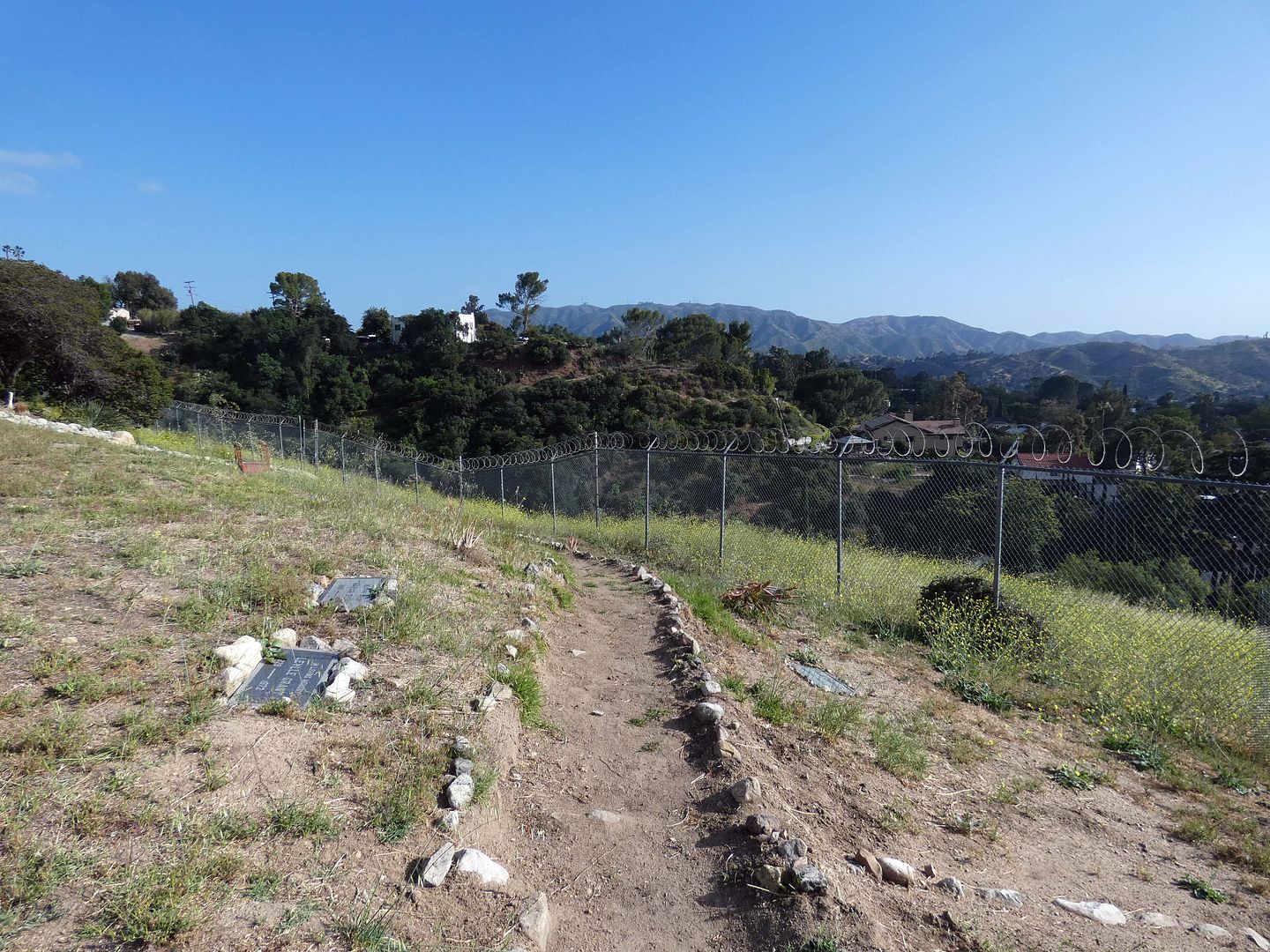
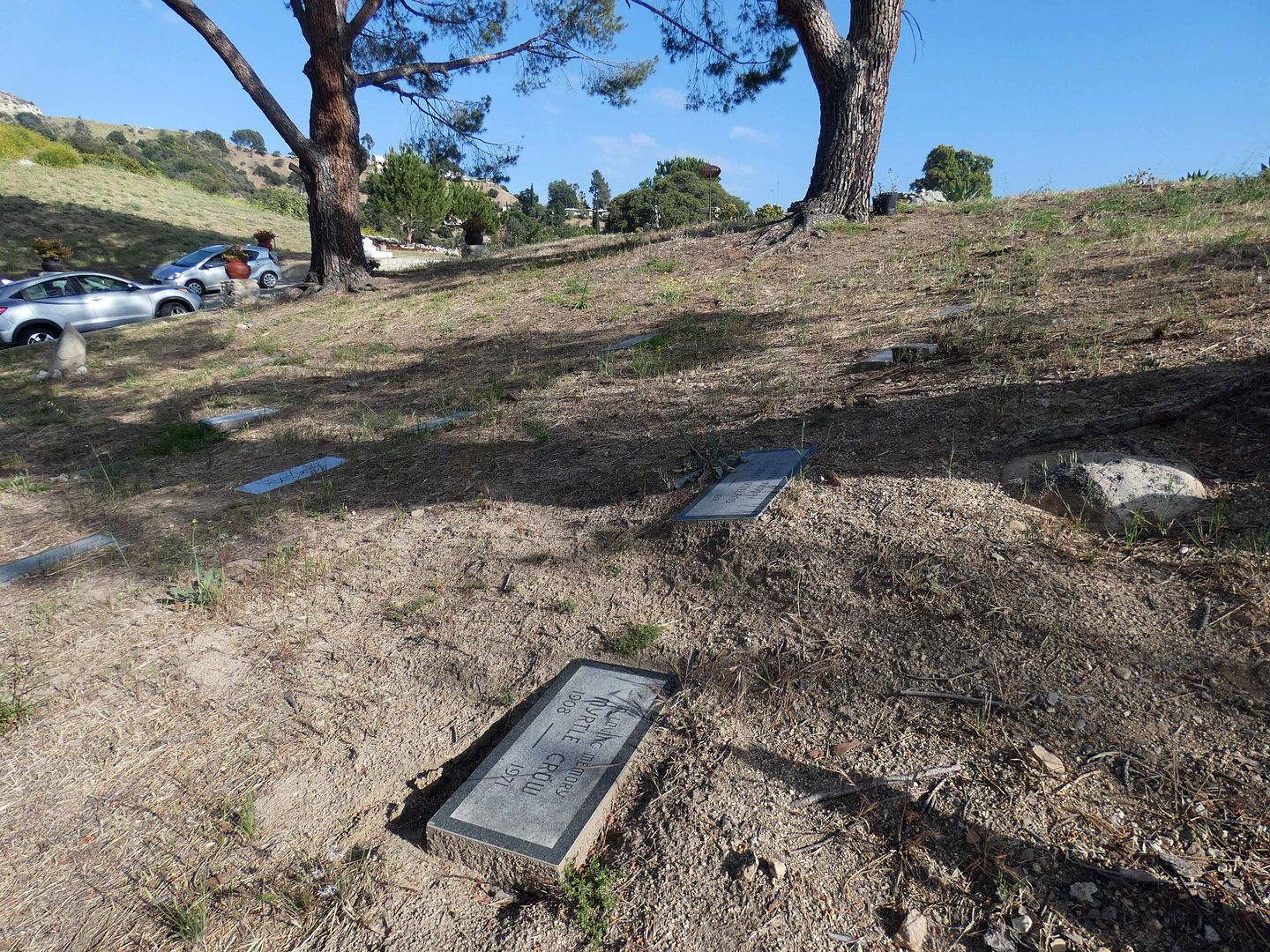

Reportedly, there are only 220 headstones accounting for 2,247 actual graves at the cemetery, according to records.

Some small concrete pillars were uncovered during restoration work—which are thought to be part of the cemetery's original system for selling and allocating burial plots (some of which may have been purchased but never actually used).

While some headstones are original, many have had to be replaced over the last several decades.

Some metal markers had gotten buried so deep beneath the surface, it took members of the Gold Coast Treasure Hunters with metal detectors to find them under several inches of dirt.
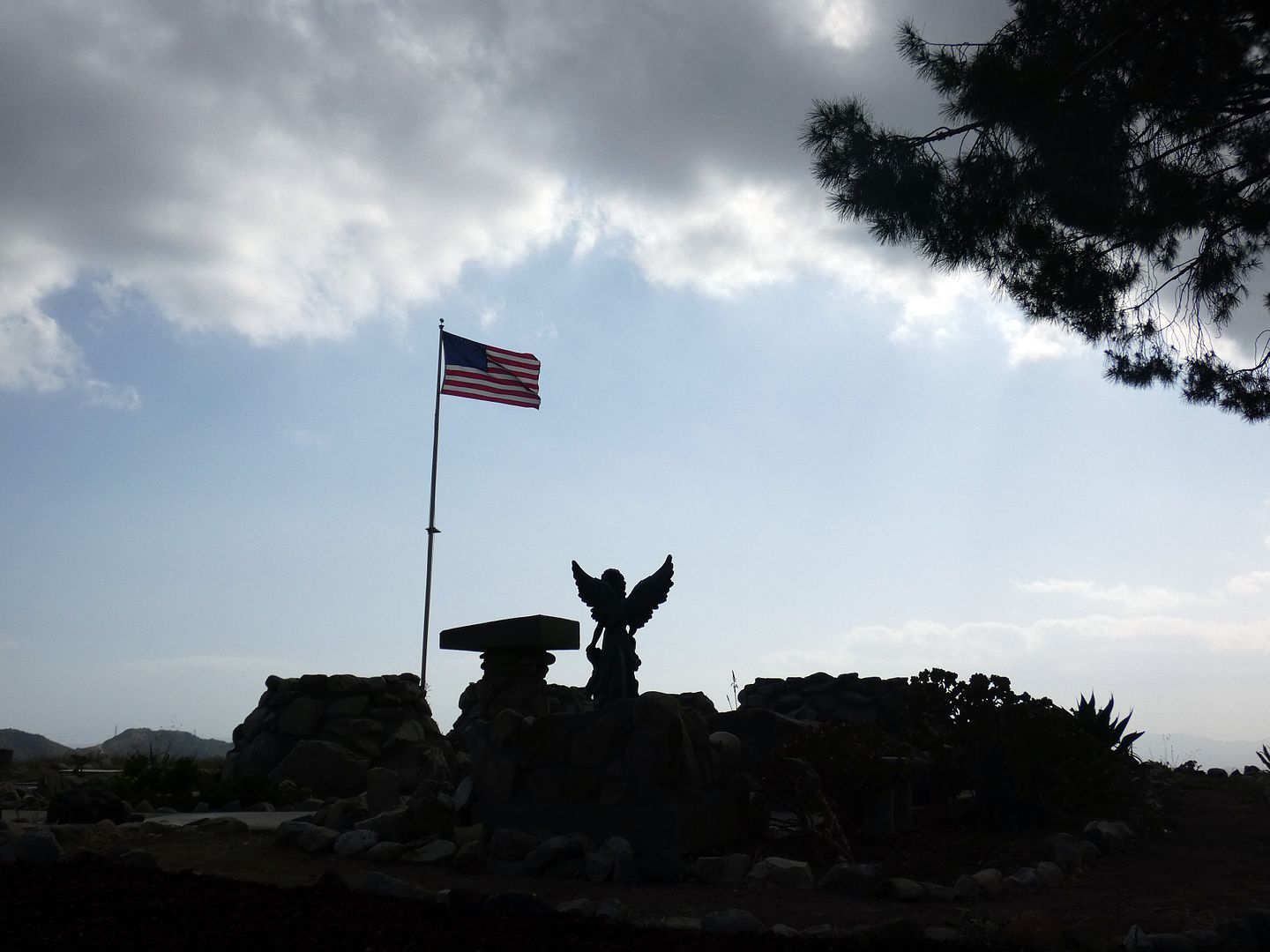

There were several caretakers of Verdugo Hills Cemetery over the last century—including, for 30 years, Mabel Hatch (Hiram's daughter) until 1957. Not all of Mabel's successors took very good care of the property.
Many, many other volunteers have gotten involved as well—including former LAPD sergeant Herrold Egger, who was also formerly the president of Little Landers Historical Society.
Now it's in the hands of the Friends of Verdugo Hills Cemetery, with fundraising efforts continuing even after the centennial celebration, and future open houses and volunteer work days planned.
Thank you to Craig Durst for giving me a private, in-person tour after I couldn't make the centennial party. Now that the cemetery looks so good, I didn't want my prior blog post to be my only record of its condition.
Related Posts:

No comments:
Post a Comment